10 Mesmerizing Mehndi Designs That Will Leave You in Awe
Are you a fan of beautiful and intricate designs? Do you appreciate the artistry and cultural significance of mehndi? If so, you’re in for a treat! In this article, we will explore ten mesmerizing mehndi designs that will leave you in awe. From traditional motifs to contemporary patterns, these designs showcase the timeless beauty of mehndi art. So, grab a cup of tea, sit back, and let’s delve into the world of stunning mehndi designs!
Table of Contents
- Introduction
- The History and Significance of Mehndi
- Traditional Mehndi Designs
- 3.1 Intricate Floral Patterns
- 3.2 Paisley Motifs
- 3.3 Geometric Shapes and Lines
- Bridal Mehndi Designs
- 4.1 Elaborate Full Hand Designs
- 4.2 Ornate Feet Designs
- 4.3 Symbolic Elements
- Contemporary Mehndi Designs
- 5.1 Minimalist Mehndi
- 5.2 Fusion of Cultures
- 5.3 Modern Abstract Patterns
- Tips for Applying Mehndi
- Mehndi as a Form of Self-Expression
- Mehndi as a Global Trend
- Conclusion
- FAQs (Frequently Asked Questions)
1. Introduction
Mehndi, a traditional body art technique popularly known as henna, has been cherished and cultivated for countless generations. The mesmerizing art form encompasses the delicate process of applying a specialized paste derived from the leaves of the henna plant. Its purpose is to embellish the body, with a particular emphasis on adorning intricate desig ns upon diverse regions, most notably the hands and feet. Mehndi holds a special place in many cultures, symbolizing joy, celebration, and auspiciousness. Let’s explore some of the mesmerizing mehndi desig ns that will captivate your imagination.
2. The History and Significance of Mehndi
The art of henna, known as Mehndi, boasts a deeply rooted heritage that spans countless millennia. It originated in ancient Egypt and spread to India, Pakistan, and other parts of the world. In different cultures, mehndi holds various meanings. It is often associated with weddings, festivals, and other joyous occasions. The intricate patterns symbolize beauty, good luck, and protection against evil spirits.
3. Traditional Mehndi Designs

3.1 Intricate Floral Patterns
One of the most popular types of mehndi designs is intricate floral patterns. These designs feature delicate flowers, leaves, and vines that intertwine to create a mesmerizing effect. The level of detail and precision in these designs is truly remarkable, showcasing the artist’s skill and expertise.
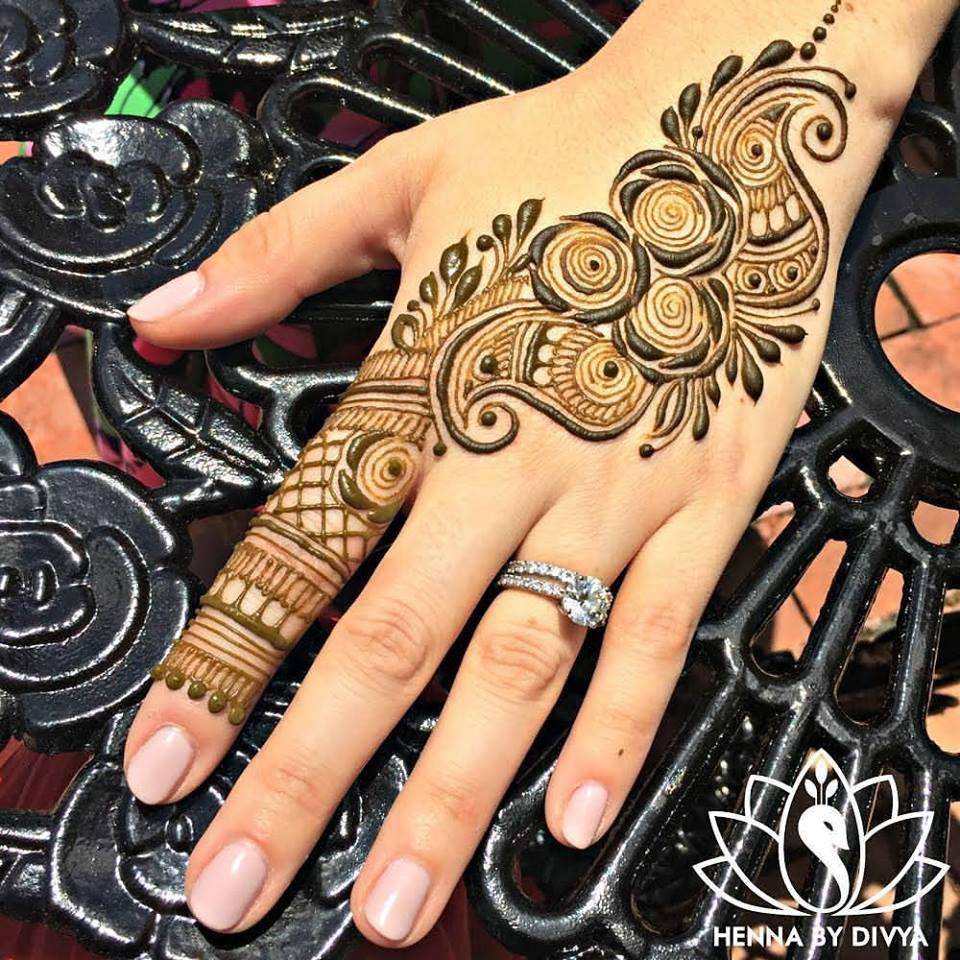
3.2 Paisley Motifs
Paisley motifs are another classic element in mehndi designs. These teardrop-shaped patterns originated in Persia and have since become a staple in mehndi art. Paisley motifs can be combined with other elements like flowers and swirls to create stunning compositions.

3.3 Geometric Shapes and Lines
For those who prefer a more contemporary look, mehndi designs featuring geometric shapes and lines are an excellent choice. These designs often incorporate intricate symmetry and precision, resulting in a modern and eye-catching aesthetic.
4. Bridal Mehndi Designs

4.1 Elaborate Full Hand Designs
Bridal mehndi designs are known for their grandeur and intricacy. These intricate patterns encompass the entirety of the hand, reaching from the tips of the fingers all the way to the wrists. Elaborate patterns, including paisleys, flowers, and intricate motifs, are meticulously applied to create a stunning masterpiece.
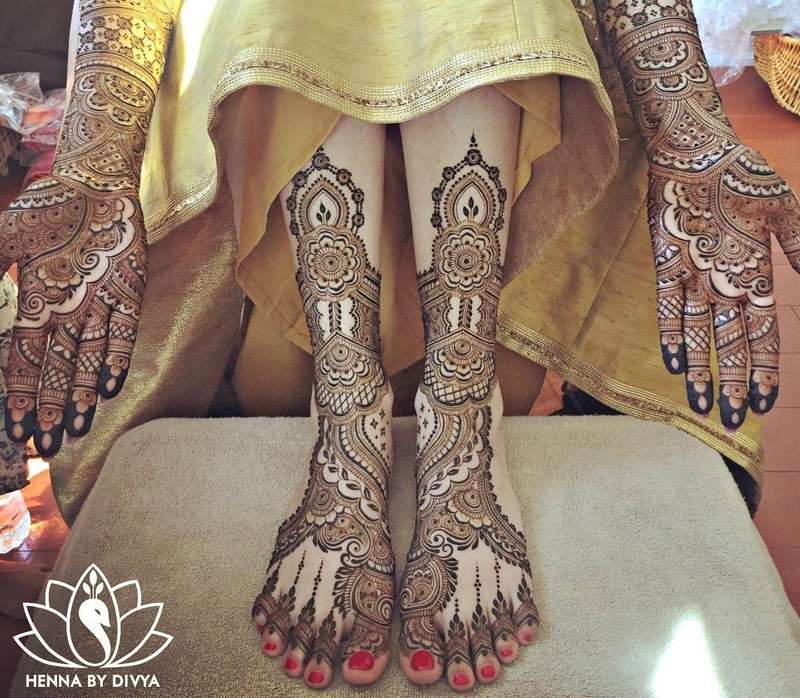
4.2 Ornate Feet Designs
In many cultures, mehndi is also applied to the feet of the bride. Ornate feet designs feature intricate patterns that adorn the toes, arches, and ankles. These designs enhance the beauty of the bride and add an extra touch of elegance to her overall appearance.
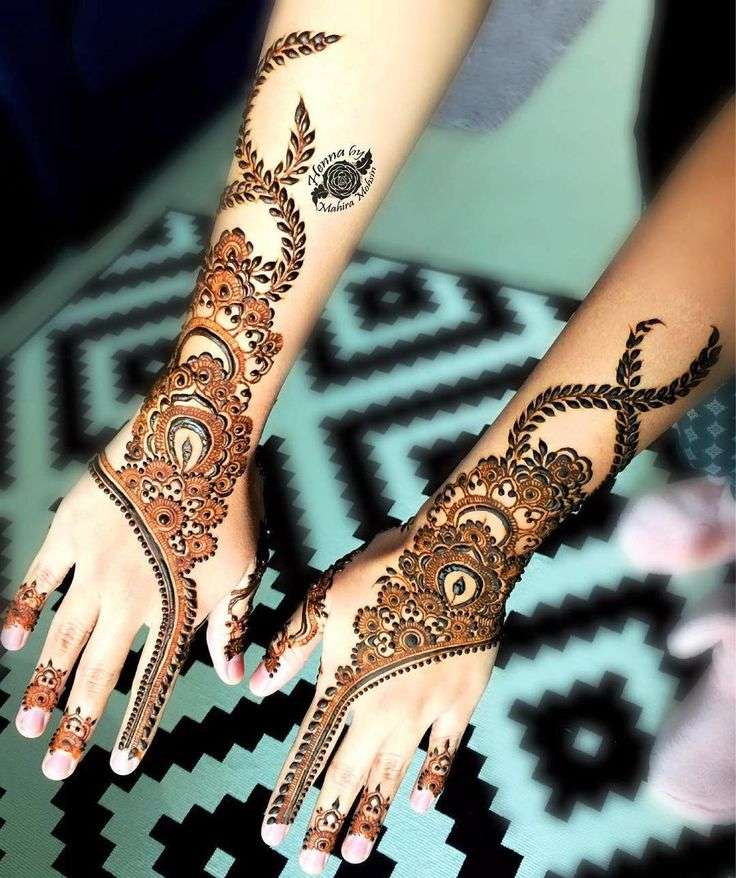
4.3 Symbolic Elements
Bridal mehndi designs often incorporate symbolic elements that hold significance in the bride’s culture. These elements can include the initials of the bride and groom, auspicious symbols, or representations of love and prosperity.
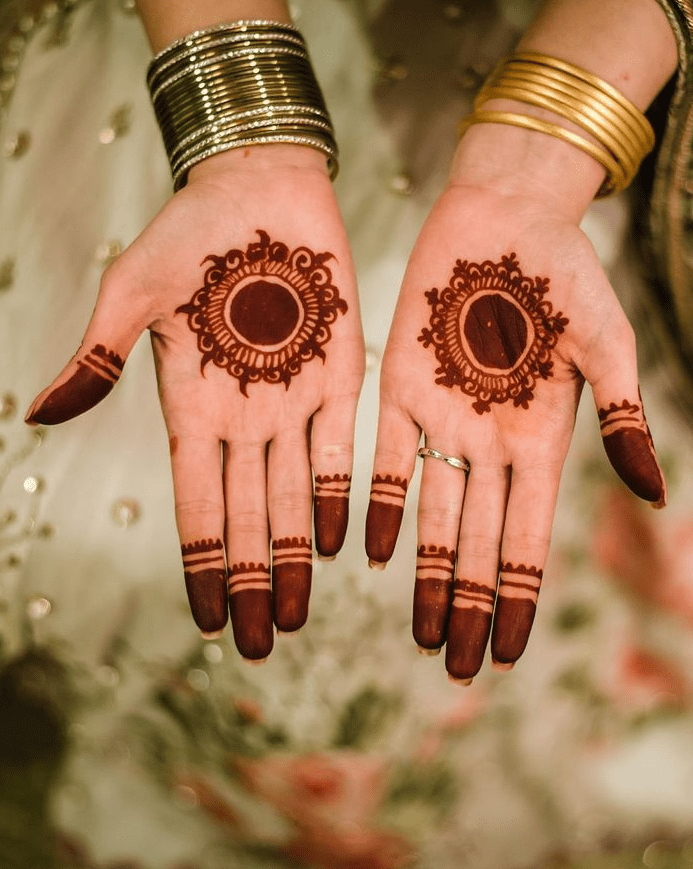
5. Contemporary Mehndi Designs
5.1 Minimalist Mehndi
In recent years, minimalist mehndi designs have gained popularity. These designs focus on simplicity and clean lines, creating a chic and understated look. Minimalist mehndi is perfect for those who prefer a more subtle and modern approach to mehndi art.
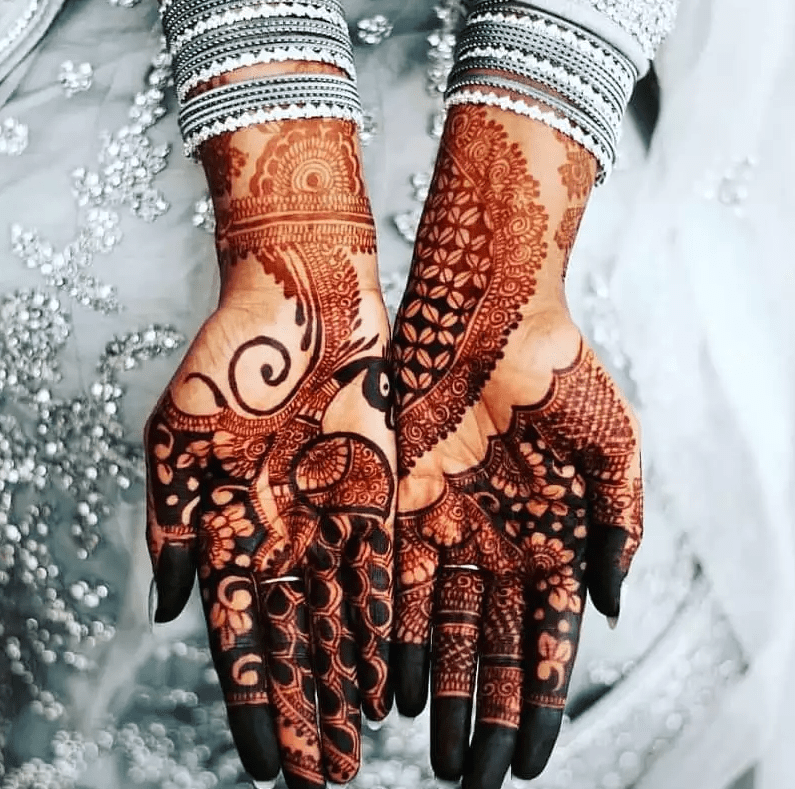
5.2 Fusion of Cultures
With the world becoming more interconnected, mehndi designs have also evolved to incorporate elements from different cultures. Fusion designs combine traditional motifs with modern patterns, resulting in a unique blend of styles that reflect the diversity of our global society.

5.3 Modern Abstract Patterns
For those who want to break free from tradition, modern abstract patterns offer a refreshing take on mehndi art. These feature bold lines, geometric shapes, and abstract elements that challenge conventional norms and push the boundaries of creativity.
6. Tips for Applying Mehndi
If you’re inspired to try applying mehndi yourself, here are some tips to help you get started:
Prepare the henna paste using high-quality henna powder and other natural ingredients.
Cleanse and exfoliate the area where you’ll be applying mehndi to ensure better adhesion.
Use a fine-tipped applicator or a cone for precise and controlled application.
Allow the mehndi to dry completely before removing it or applying any protective coating.
Avoid contact with water for at least 24 hours after applying mehndi to achieve a deeper and longer-lasting stain.
7. Mehndi as a Form of Self-Expression
Mehndi goes beyond its aesthetic appeal and serves as a form of self-expression. Many people use mehndi to convey their personality, beliefs, or emotions. From intricate desig ns symbolizing love and spirituality to customized patterns representing personal experiences, mehndi allows individuals to tell their unique stories through art.
8. Mehndi as a Global Trend
In recent years, mehndi has gained popularity worldwide, transcending cultural boundaries. People from different backgrounds now embrace mehndi as a form of body art and self-expression. Mehndi artists have emerged as creative talents, showcasing their skills through social media platforms and international events.
9. Conclusion
Mehndi is truly a captivating art form that has stood the test of time. The ten mesmerizing mehndi desig ns we explored in this article are just a glimpse into the vast world of henna artistry. Whether you’re a fan of traditional motifs or prefer contemporary styles, mehndi offers endless possibilities for self-expression and admiration. So, next time you come across a stunning mehndi desig n, take a moment to appreciate the intricate beauty that lies within.
10. FAQs (Frequently Asked Questions)
Q1: How long does mehndi last?
A1: The longevity of mehndi depends on various factors, including the quality of henna used, individual body chemistry, and care taken after application. On average, mehndi stains can last anywhere from one to three weeks.
Q2: Is mehndi application painful?
A2: No, mehndi application is not painful. The henna paste is gentle on the skin and typically does not cause any discomfort. However, some individuals may experience mild itching or a tingling sensation during the drying process, which is normal.
Q3: Can anyone apply mehndi, or is it limited to specific cultures?
A3: Mehndi is practiced by various cultures around the world, and anyone can apply mehndi regardless of their cultural background. It is a beautiful art form that welcomes diversity and individual creativity.
Travel Blog :- https://rkpedia.com/travel/
